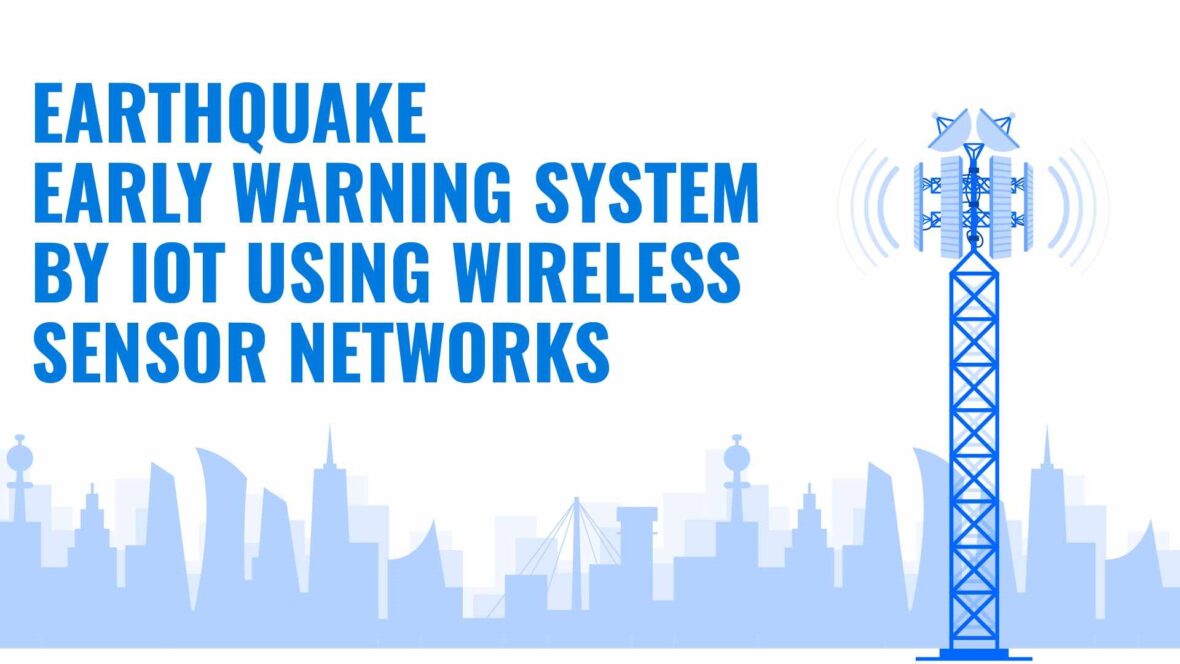Earthquakes occur without warning, hence, making them one of the most feared natural disasters. Several startups are working on earthquake early warning systems using IoT (Internet of Things) sensors. Earthquake detection is offered by interconnecting a number of seismic sensors to a central server. The system operates by detecting motion close to the earthquake epicenter and sending a warning alert to users who are further away from the epicenter. The system needs a large number of sensors for covering earthquake prone zones. Sensor costs have considerably decreased over the last few years through advances in smart phone and wearable technology, building an earthquake early warning system by IoT affordable.
On the other hand, Japan has experienced several large seismic events in its history and takes earthquake threats seriously, implementing strict building codes and investing in disaster response personnel. Even then, huge damage and loss of life happen with every major Japanese earthquake. After the catastrophic 7.3 magnitudes Kyoto earthquake in 1995 having a death toll of 6,434, Japan’s government made additional safeguards for its citizens in the form of a system that makes seismic early warnings. An earthquake early warning system by IoT provides safeguards for people and industries. Industrial activities can be stopped before the onset of an earthquake enabling workers to secure sensitive equipment. People can take shelter in safe areas before an earthquake to help reduce injuries and loss of life.
Nowadays, Japan is having the most advanced early warning system in the world. This system has come at a price of one billion dollars. It is effective, however, unfortunately, unaffordable for most but the richest countries. These systems operate by implementing highly sensitive sensors near fault lines. These communicate to central servers via phone, satellite, internet, and other communication channels. Several startups are creating an earthquake early warning system by IoT which will decrease the cost by many orders of magnitude. Thereby, democratizing this imperative technology.
A signal is sent to a server in hundredths of a second when an earthquake is identified. Sensor data is collected across the individual devices and processed by computational engines for determining where the earthquake epicenter is located and where damaging seismic waves are moved.
The data is used in multiple ways. First, alerts are sent to the community with smartphone apps using cloud messaging services provided by Google and Apple. In addition, information collected from all of the sensors in a geographical zone are analyzed to give a high-resolution assessment of earthquake hazards for first responders in real time. Damage-assessment maps present relative damage across a community, enabling first responders to service areas that experienced more damage first. The damage maps are transmitted via email to fire departments within a few minutes of the earthquake and are downloaded to battery-powered devices in case power is compromised. This information helps in optimizing the emergency response, sending aid where it is needed most.
IoT devices are holding the power to transform the reactive disaster management techniques into predictive ones. The incorporation of IoT devices in the form of robots, sensors, and unmanned vehicles can aid in better preparedness and responsiveness to natural disasters like earthquakes, wildfires, and floods. It can also help in averting manmade disasters such as the explosion of reactors.
Smart sensors can be connected to bridges, buildings, and other places. These devices can collect and analyze data to help in monitoring seismic activities. If these devices recognize patterns that predict an earthquake, they can transmit alarms to government authorities and individuals on mobile devices at the earliest, warning them of the same. Similarly, these devices can be linked to public announcement systems for warning individuals and guiding them with the necessary steps to be taken.
Thus, earthquake early warning system by IoT devices can help in saving lives and minimize the costs invested in relief measures. They can also make rescue operations simpler for emergency services staff. For instance, a free mobile application has been built that incorporates acceleration sensors for predicting earthquakes. If a large number of mobile devices register the signals linked with earthquakes, it alerts individuals and authorities. The application makes use of artificial intelligence technology for its operation and is able to detect an earthquake measuring more than 5 on the Richter scale.
On the contrary, you can’t stop certain disasters from happening. But you can become better prepared for handling them at any time. Earthquake early warning system by IoT can help overcome inefficiencies in the reactive approach presently used in disaster management procedures. IoT devices can even facilitate in averting crisis altogether that caused due to human errors. Governments across the globe need to boost the implementation of IoT in disaster management considering all the benefits and improvements they carry. And the improvement in technologies such as robotics, computer vision, AI, data analytics, and machine learning will aid in further improving IoT’s potential in disaster management. It will construct disaster response more effective, thereby helping minimize substantial losses.






